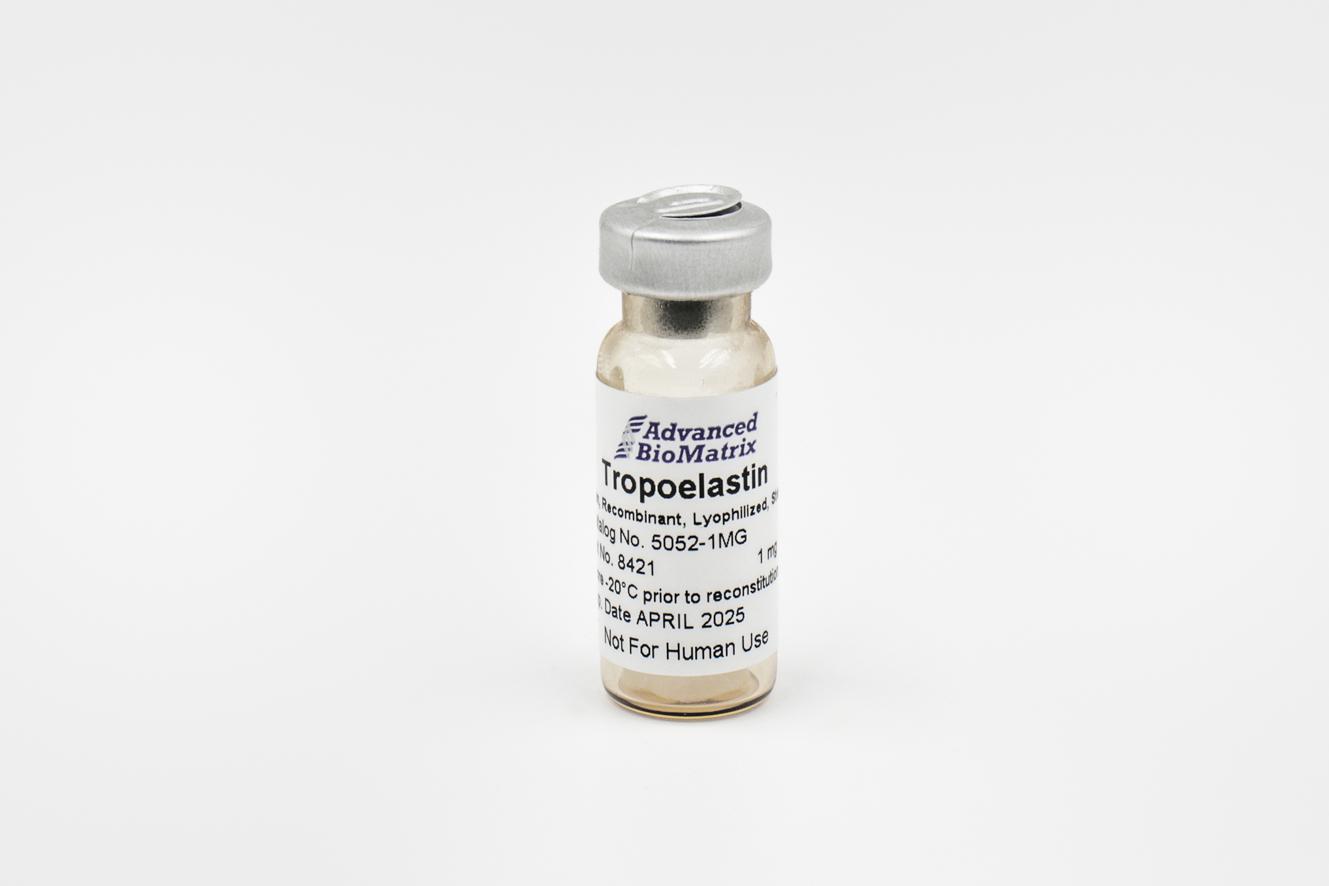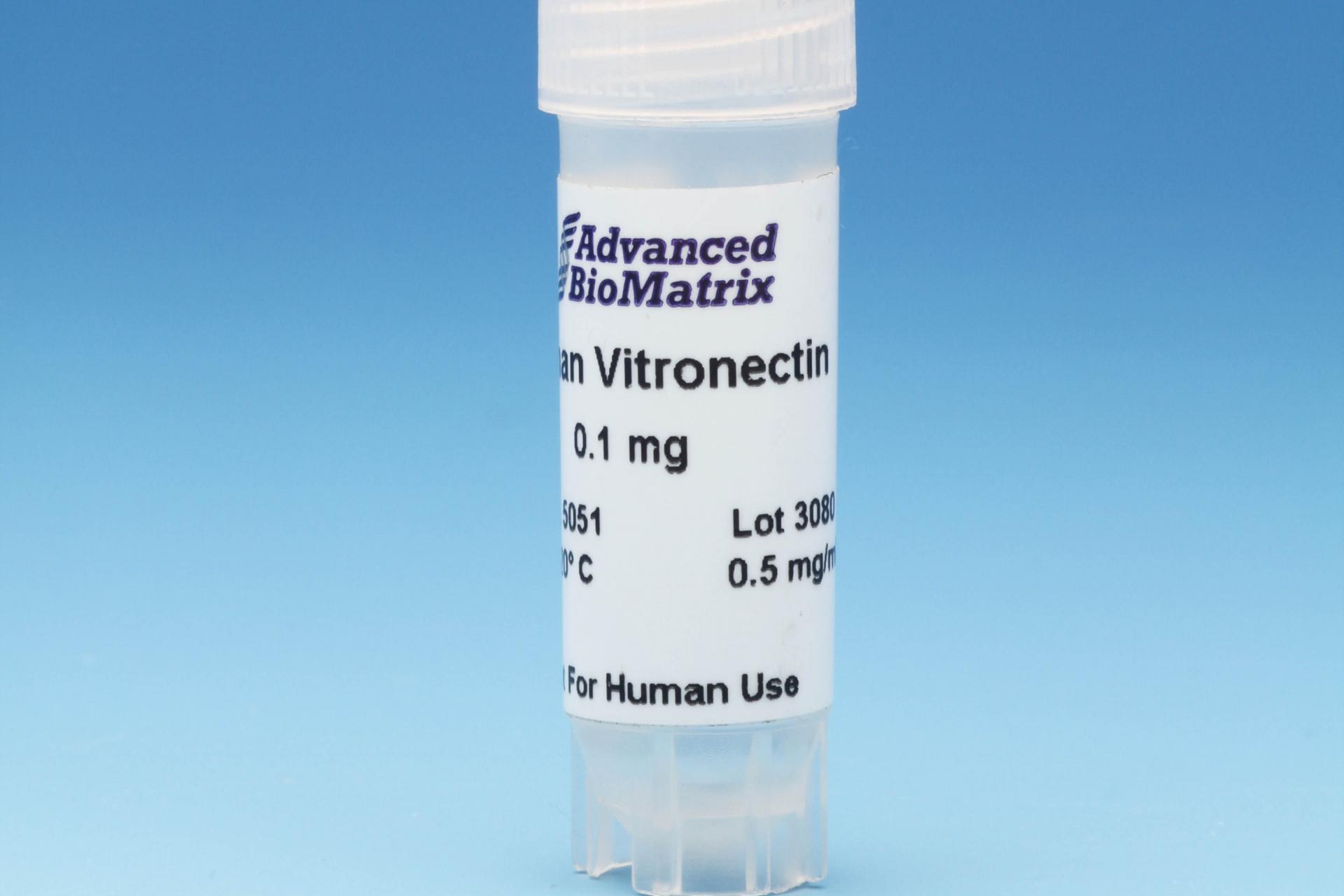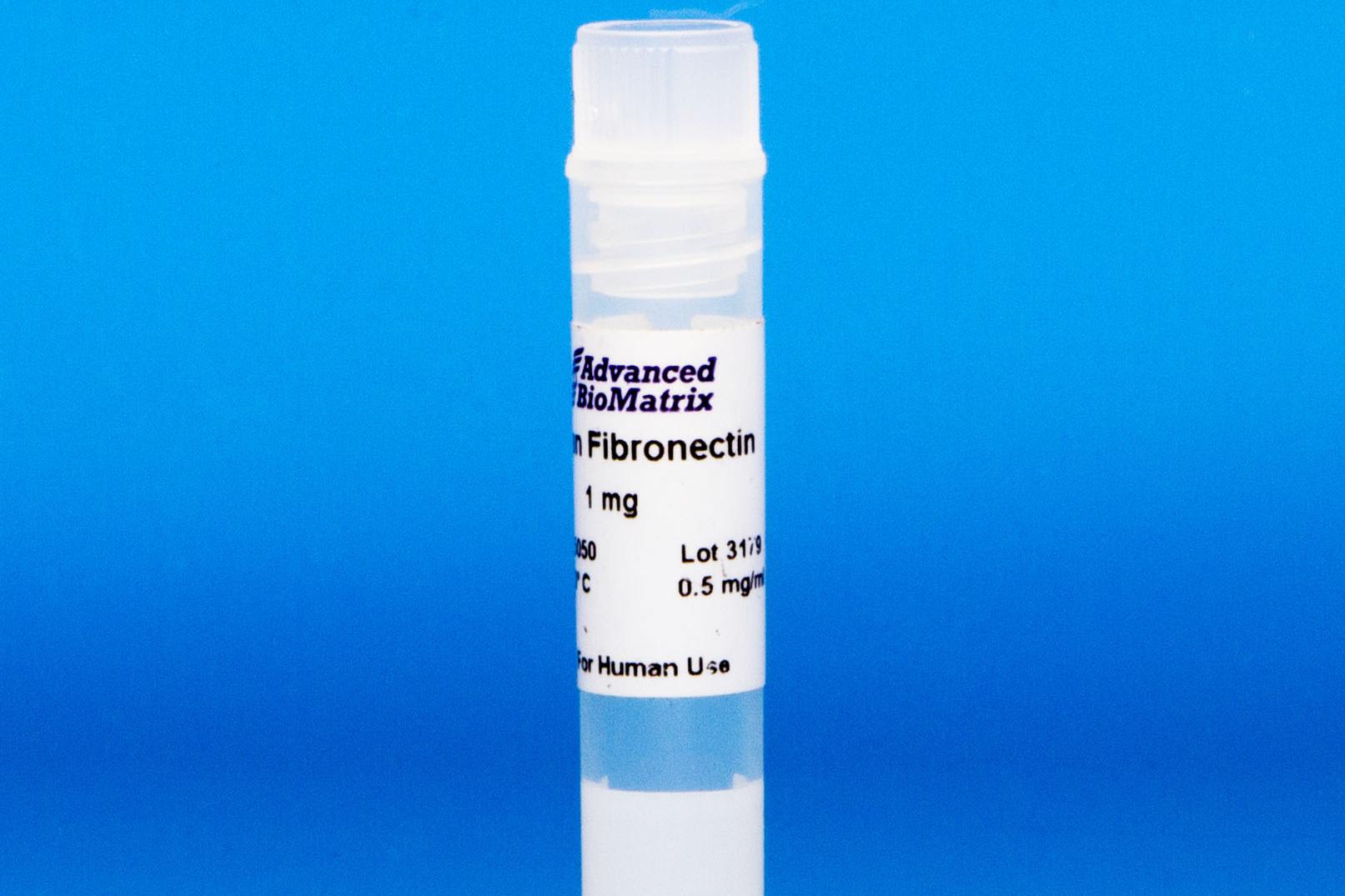-
Collagen
-
Type I - Atelocollagen
- PureCol® Solution, 3 mg/ml (bovine) #5005
- Nutragen® Solution, 6 mg/ml (bovine) #5010
- FibriCol® Solution, 10 mg/ml (bovine) #5133
- PureCol® EZ Gel, Solution, 5 mg/ml (bovine) #5074
- PureCol® Lyophilized, 15 mg (bovine) #5006
- VitroCol® Solution, 3 mg/ml (human) #5007
- VitroCol® Lyophilized, 15 mg (human) #5008
-
Type I - Telocollagen
- TeloCol®-3 Solution, 3 mg/ml (bovine) #5026
- TeloCol®-6 Solution, 6 mg/ml (bovine) #5225
- TeloCol®-10 Solution, 10 mg/ml (bovine) #5226
- RatCol™ for 2D and 3D, Solution, 4 mg/ml (rat) #5153
- RatCol™ High Concentration, Solution, 10 mg/ml (rat)
- RatCol™ lyophilized, 100 mg (rat)
- RatCol™ for Coatings, Solution, 4 mg/ml (rat) #5056
- Type I - Insoluble Collagen
- Type I - Bioinks
- Type II Collagen
- Type III Collagen
- Type IV Collagen
- Collagen Standard
-
PureCol® Collagen Coated Plates
- Collagen Coated T-25 Flasks #5029
- Collagen Coated 6-well Plates #5073
- Collagen Coated 12-well Plates #5439
- Collagen Coated 24-well Plates #5440
- Collagen Coated 48-well Plates #5181
- Collagen Coated 96-well Plates #5072
- Collagen Coated 384-well Plates #5380-5EA
- Collagen Coated 100 x 20 mm Dishes #5028
- MatTek Glass-Bottom Dishes
- MatTek Multi-Well Plates
- Collagen Scaffolds
- Collagen Hybridizing Peptides
-
Type I - Atelocollagen
- Tunable Stiffness
- CytoSoft™ Rigidity Plates
-
Bioprinting
- Support Slurry for FRESH Bioprinting
-
Bioinks for Extrusion Bioprinting
- Lifeink® 200 Collagen Bioink (35 mg/ml) #5278
- Lifeink® 220 Collagen Bioink (70 mg/ml) #5343
- Lifeink® 240 Acidic Collagen Bioink (35 mg/ml) #5267
- Lifeink® 260 Acidic Collagen Bioink (70 mg/ml) #5358
- GelMA Bioink
- GelMA A Bioink
- GelMA C Bioink
- Pluronic F-127 40% Sterile Solution
- GelMA 20% Sterile Solution
- Alginate 5% Sterile Solution
- Photoinitiators
- Bioinks for BIONOVA X
- Bioinks for Lumen X
- DLP Printing Consumables
-
Create Your Own Bioinks
- PhotoCol® Methacrylated Collagen
- PhotoGel® Methacrylated Gelatin 95% DS
- PhotoGel® Methacrylated Gelatin 50% DS
- PhotoHA®-Stiff Methacrylated Hyaluronic Acid
- PhotoHA®-Soft Methacrylated Hyaluronic Acid
- PhotoAlginate® Methacrylated Alginate
- PhotoDextran® Methacrylated Dextran
- PEGDA (Various Molecular Weights)
- Silk Fibroin, Solution
- PhotoSericin® Methacrylated Sericin
- Bioprinters
-
3D Hydrogels
- Thermoreversible Hydrogel
- Silk Fibroin
-
Type I Collagen for 3D Hydrogels
- PureCol® Solution, 3 mg/ml (bovine) #5005
- Nutragen® Solution, 6 mg/ml (bovine) #5010
- FibriCol® Solution, 10 mg/ml (bovine) #5133
- PureCol® EZ Gel, Solution, 5 mg/ml (bovine) #5074
- VitroCol® Solution, 3 mg/ml (human) #5007
- TeloCol®-3 Solution, 3 mg/ml (bovine) #5026
- TeloCol®-6 Solution, 6 mg/ml (bovine) #5225
- TeloCol®-10 Solution, 10 mg/ml (bovine) #5226
- RatCol® for 3D gels, Solution, 4 mg/ml (rat) #5153
- HyStem® Thiolated Hyaluronic Acid
- Methacrylated Collagen
- Methacrylated Gelatin
- Methacrylated Hyaluronic Acid
- Diacrylates
- Collagen Sponges
- Methacrylated Polysaccharides
- Spheroids and Organoids
- Extracellular Matrices
- HyStem / Hyaluronic Acid
-
Adhesion Peptides / Proteins
-
Recombinant Adhesion Proteins
- CD2, 0.5 mg/ml #5086
- CDH3, 0.5 mg/ml #5124
- CDH13, 0.5 mg/ml #5125
- CD14, 0.5 mg/ml #5089
- CDH18, 0.5 mg/ml #5090
- CD40, 0.5 mg/ml #5093
- CD86, 0.5 mg/ml #5096
- CD164, 0.5 mg/ml #5100
- CD270, 0.5 mg/ml #5127
- CD274, 0.5 mg/ml #5126
- CD276, 0.5 mg/ml #5123
- E-Cadherin (CD324), 0.5 mg/ml #5085
- ICAM2, 0.5 mg/ml #5107
- Adhesion Peptides
- Collagen Hybridizing Peptides
-
Recombinant Adhesion Proteins
- Reagents
- Assays
Recombinant Vitronectin
Solution, 0.5 mg/ml
Catalog #5121
Recombinant Vitronectin
Solution, 0.5 mg/ml
Catalog #5121
This Recombinant Human Vitronectin gene (20-398 aa Fragment) was constructed with codon optimization and expressed in non-fusion protein form in E. coli as inclusion bodies. The final product was refolded using a unique “temperature shift inclusion body refolding” technology and chromatographically purified.
Product Description
Vitronectin is a 478 amino acid protein (1-19aa = signal domain) that belongs to a member of the pexin family. Vitronectin is an abundant glycoprotein found in serum and the extracellular matrix. It promotes cell adhesion and spreading, inhibits the membrane-damaging effect of the terminal cytolytic complement pathway, and binds to several serpin serine protease inhibitors. It is a secreted protein and exists in either a single chain form or a clipped, two chain form held together by a disulfide bond. Vitronectin has been speculated to be involved in hemostasis and tumor malignancy.
Recent publications indicated that coated recombinant human vitronectin protein alone benefits iPS cell generation when combined with E8 culture medium. The product has also been shown to be an excellent coating matrix material for 1 1R-tagged recombinant TF intracellular delivery for protein derived iPS protocol with extremely low levels of non-specific interaction. Recombinant human Vitronectin gene (20-398 aa Fragment) was constructed with codon optimization and expressed in non-fusion protein form in E. coli as inclusion bodies. The final product was refolded using a unique “temperature shift inclusion body refolding” technology and chromatographically purified.
Vitronectin is ideal for coating of surfaces. The optimal concentration for cell attachment and culture may differ for various cell types. Vitronectin has been used at a final coating concentration as low as 50 ng/cm2 on plasticware. Further, coating this recombinant protein at 5 – 10 µg/well (6 well plate in either NutriStem or E8 medium can be used for human iPS cell generation in vitro. It is provided in user-friendly packaging for use and storage. Vitronectin is sterile filtered and is supplied as a ready to use solution after thawing and concentration adjustment.
| Parameter, Testing, and Method | Recombinant Vitronectin #5121 |
| Quantity | 0.5 mg |
| Volume | 1 mL |
| Concentration | 0.5 mg/mL |
| Purity - SDS PAGE Electrophoresis | >90% |
| Formulation | 20 mM pH 8 Tris-HCL buffer with proprietary formulation of NaCl, KCl, EDTA, Arginine, DTT and Glycerol |
| Form | Solution |
| Source | Recombinant - E. Coli |
| Storage Temperature | -20°C or -70°C for long term storage |
| Shelf Life | Minimum of 6 months from date of receipt |
| Sterilization Method | Filtration |
| Cell Attachment Assay | Passes |
| Accession Number | NP_000692 |
Directions for Use
Recommended Volumes for 2D Coatings or 3D Hydrogels
Download the full PDF version or continue reading below:
Coating Procedure:
Use these recommendations as guidelines to determine the optimal coating conditions for your culture system.
- Thaw Vitronectin and dilute to desired concentration using serum-free medium or PBS. The final solution should be sufficiently dilute so that the volume added covers the surface evenly.
- Add appropriate amount of diluted material to culture surface.
- Incubate at room temperature for 1-2 hours.
- Aspirate remaining material.
- Rinse plates carefully with dH2O– avoid scratching bottom surface of plates.
- Plates are ready for use. They may also be stored at 2-8°C damp or air dried if sterility is maintained.
Product Applications
Coating recombinant human VTN protein for ES or iPS cell culture can be easily performed as following:
1. Add 1ml PBS buffer to a single well of 6 well plate, and mix well with 10ug recombinant VTN (20ul solution, 0.5mg / ml of VTN stocking solution).
2. Place culture plate at 4 °C for overnight.
3. Plates are ready for routine ES culture. (Remove coating PBS buffer before cell culture).
Product References
Vitronectin References:
Wiley, Luke A., et al. "Using patient-specific induced pluripotent stem cells and wild-type mice to develop a gene augmentation-based strategy to treat CLN3-associated retinal degeneration." Human gene therapy 27.10 (2016): 835-846.
Wiley, Luke A., et al. "Generation of xeno‐free, cGMP‐compliant patient‐specific iPSCs from skin biopsy." Current protocols in stem cell biology 42.1 (2017): 4A-12.
Dwyer, Sheila Figel, Lingqiu Gao, and Irwin H. Gelman. "Identification of novel focal adhesion kinase substrates: Role for FAK in NFκB signaling." International journal of biological sciences 11.4 (2015): 404.
Wiley, Luke A., et al. "cGMP production of patient-specific iPSCs and photoreceptor precursor cells to treat retinal degenerative blindness." Scientific reports 6 (2016): 30742.
Kittur, Harsha, et al. "Probing Cell Adhesion Profiles with a Microscale Adhesive Choice Assay." Biophysical journal 113.8 (2017): 1858-1867.
Dwyer, Sheila Figel, and Irwin H. Gelman. "Cross-phosphorylation and interaction between Src/FAK and MAPKAP5/PRAK in early focal adhesions controls cell motility." Journal of cancer biology & research 2.1 (2014).
Worthington, Kristan S., et al. "Two-photon polymerization for production of human iPSC-derived retinal cell grafts." Acta biomaterialia 55 (2017): 385-395.
Product Certificate of Analysis
No result for .
Product Disclaimer
This product is for R&D use only and is not intended for human or other uses. Please consult the Material Safety Data Sheet for information regarding hazards and safe handling practices.







